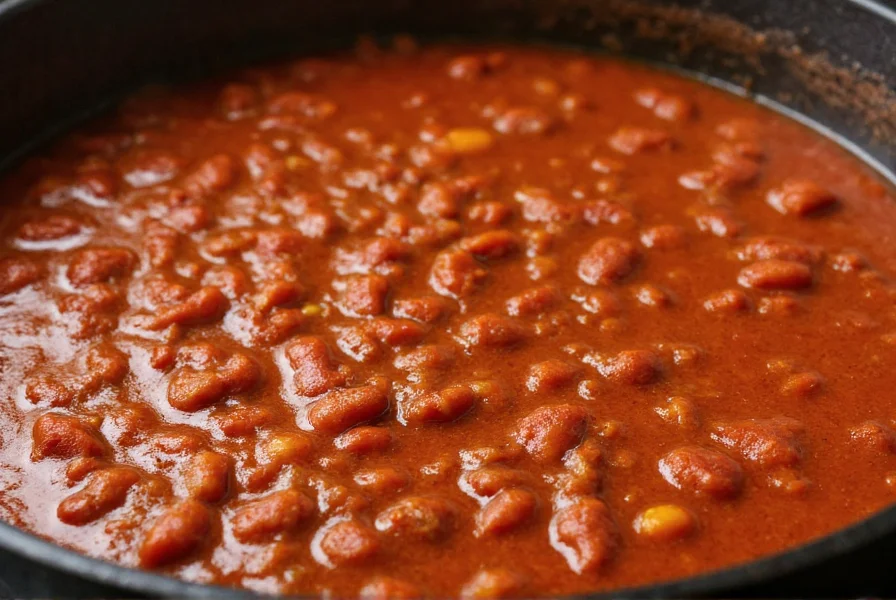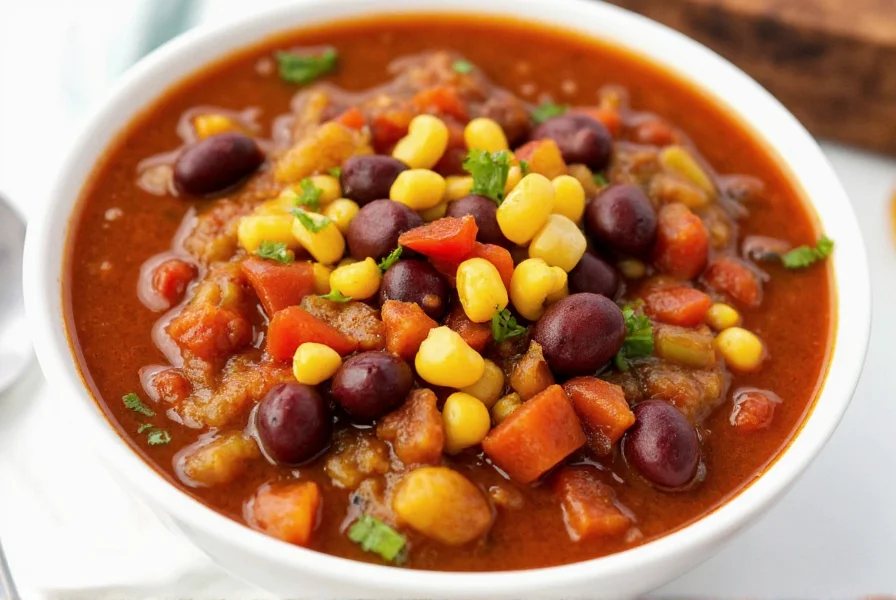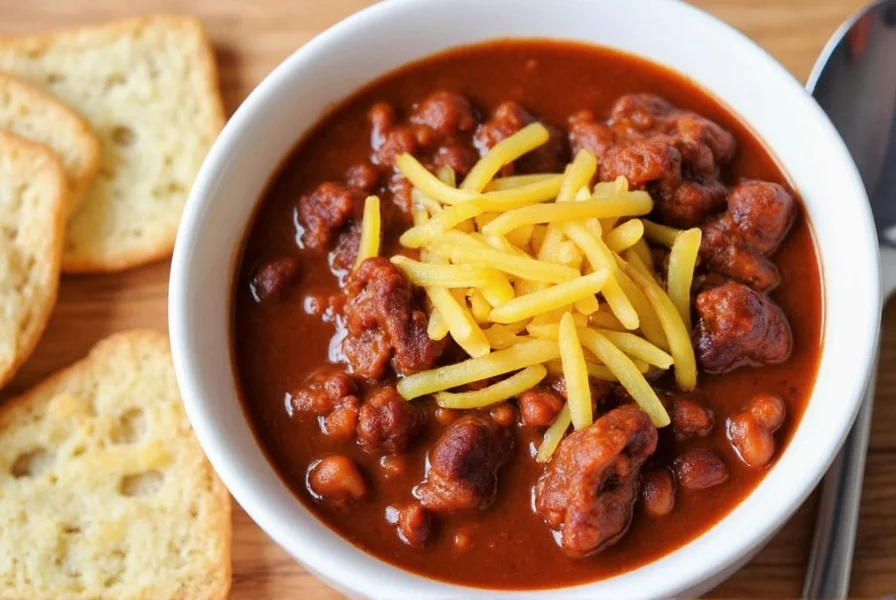Creating exceptional homemade chili goes beyond simply combining ingredients in a pot. The magic happens through understanding flavor development, ingredient roles, and cooking techniques that transform basic components into a rich, complex dish. Forget those 30-minute "quick" chili recipes—true chili mastery requires time and attention to detail.
The Essential Components of Authentic Chili
Before diving into specific recipes, understanding what makes chili exceptional is crucial. Great chili balances five key elements:
- Meat selection - Chuck roast or brisket provide ideal marbling
- Spice foundation - Toasted whole chilies create depth beyond powder
- Flavor enhancers - Coffee, chocolate, or beer add complexity
- Texture control - Proper simmering time develops ideal consistency
- Acidity balance - A touch of vinegar or citrus brightens heavy flavors

Classic Texas-Style Beef Chili Recipe
This authentic Texas-style chili recipe honors the Lone Star State's tradition of meat-focused chili without beans. The secret lies in using multiple dried chilies for complex flavor.
| Prep Time | Cook Time | Servings | Difficulty |
|---|---|---|---|
| 30 minutes | 3 hours | 6-8 | Intermediate |
Ingredients
- 2 lbs beef chuck roast, cut into 1-inch cubes
- 4 dried ancho chilies, stems and seeds removed
- 2 dried guajillo chilies, stems and seeds removed
- 1 dried pasilla chili, stem and seeds removed
- 1 large yellow onion, finely diced
- 4 garlic cloves, minced
- 2 tbsp cumin seeds, toasted
- 1 tbsp Mexican oregano
- 1 tsp cocoa powder
- 2 cups beef stock
- 2 tbsp apple cider vinegar
- Salt to taste
Step-by-Step Instructions
- Toast dried chilies in dry skillet over medium heat for 30 seconds per side until fragrant but not burnt
- Place toasted chilies in bowl, cover with hot water, and soak for 20 minutes
- Brown beef cubes in heavy pot over medium-high heat, working in batches
- Remove beef and sauté onions until translucent, then add garlic
- Blend soaked chilies with 1 cup stock until smooth
- Return beef to pot, add chili puree, remaining stock, and spices
- Simmer covered on low heat for 2.5-3 hours, stirring occasionally
- Skim excess fat, adjust seasoning with salt and vinegar
Popular Homemade Chili Variations
While traditional Texas chili contains only meat and spices, many regional and dietary variations have gained popularity. Here are three excellent adaptations:
Slow Cooker Cincinnati Chili
This unique style features Mediterranean spices and is traditionally served over spaghetti. For an easy homemade chili recipe using your slow cooker, combine 2 lbs ground beef, 1 onion, 3 cloves garlic, 2 tbsp cocoa powder, 2 tsp cinnamon, 1 tsp allspice, 1/4 tsp cloves, 28 oz crushed tomatoes, and 1 cup beef broth. Cook on low for 6-8 hours.
Vegetarian Three-Bean Chili
For healthy homemade chili recipes without meat, use 1 cup each of kidney beans, black beans, and pinto beans. Add 1 cup diced sweet potatoes, 1 bell pepper, 1 zucchini, 28 oz fire-roasted tomatoes, 1 cup corn, and 2 cups vegetable broth. Include 2 tbsp smoked paprika for depth. Simmer for 1.5 hours.

Spicy Chipotle Chicken Chili
This lighter option uses 2 lbs chicken thighs instead of beef. Add 3-4 chipotle peppers in adobo sauce for authentic spicy homemade chili recipe character. Include 1 can white beans and 4 cups chicken broth. Simmer for 2 hours for best results.
Pro Tips for Perfect Homemade Chili Every Time
Even with a great recipe, certain techniques make the difference between good and exceptional chili:
- Don't rush the browning - Properly seared meat creates fond that builds flavor foundation
- Toast whole spices - Releases essential oils for more vibrant flavor than pre-ground
- Acid is essential - Add vinegar or lime juice at the end to brighten heavy flavors
- Cool overnight - Chili always tastes better the next day as flavors meld
- Adjust heat gradually - Add cayenne in small increments until desired spice level
Common Homemade Chili Mistakes to Avoid
Many home cooks make these errors when preparing chili recipes:
- Using only chili powder instead of whole or blended chilies
- Adding all liquid at once rather than building layers of flavor
- Simmering too vigorously, causing meat to become tough
- Skipping the resting period before serving
- Over-relying on canned beans without proper seasoning
Serving Suggestions and Toppings
The right accompaniments elevate your homemade chili from good to extraordinary. Traditional Texas chili is served with:
- Oyster crackers or cornbread
- Finely diced white onion
- Lime wedges for fresh acidity
- Shredded cheddar or Monterey Jack cheese
For Cincinnati-style, serve over cooked spaghetti with a generous topping of shredded cheddar, diced onions, and oyster crackers—a combination known locally as "3-way," "4-way" (with beans), or "5-way" (with onions and beans).
Frequently Asked Questions
How can I make my homemade chili less spicy?
To reduce spiciness in chili, add dairy like sour cream or shredded cheese when serving. During cooking, incorporate acidic elements like lime juice or tomatoes, or add sweetness with a small amount of honey or brown sugar. Coconut milk also effectively tempers heat while adding richness.
What's the difference between chili con carne and regular chili?
Authentic chili con carne ("chili with meat") refers specifically to the Texas-style version containing only meat, chilies, and spices—no beans. In most of the United States, "chili" typically includes beans and additional ingredients. The term "chili con carne" is often used to distinguish meat-focused recipes from bean-heavy versions.
Can I freeze homemade chili?
Yes, homemade chili freezes exceptionally well. Cool completely, then store in airtight containers with 1-inch headspace for expansion. Properly frozen chili maintains quality for 4-6 months. Thaw overnight in the refrigerator and reheat gently on the stove, adding a splash of broth if needed to restore consistency.
Why does my chili taste bland?
Bland chili usually results from insufficient seasoning layers. Properly season at multiple stages: when browning meat, when adding spices, and at the end of cooking. Toast whole spices before grinding, use fresh garlic instead of powder, and finish with acid (vinegar or lime juice) to brighten flavors. Remember that chili needs time for flavors to develop—taste and adjust seasoning after 2+ hours of simmering.
How long should I simmer chili for best results?
For optimal flavor development, simmer chili for a minimum of 2 hours, though 3-4 hours yields significantly better results. The extended cooking time allows connective tissues in the meat to break down completely and flavors to meld. If using a slow cooker, 6-8 hours on low provides excellent results. Never boil chili vigorously, as this can make meat tough—maintain a gentle simmer throughout.











 浙公网安备
33010002000092号
浙公网安备
33010002000092号 浙B2-20120091-4
浙B2-20120091-4